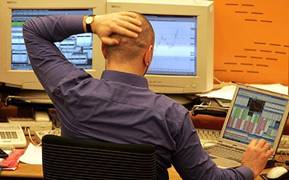 Two in five workers who use computer screens say that they suffer from headaches and over half say that they get tired eyes, with a quarter also admitting that they have "difficulty focusing". One in five workers also claim to suffer from "blurred vision".
Two in five workers who use computer screens say that they suffer from headaches and over half say that they get tired eyes, with a quarter also admitting that they have "difficulty focusing". One in five workers also claim to suffer from "blurred vision". Eye experts highlight that these conditions could be linked to the increasing amount of time that millions of people all over the country are spending staring at a computer screen.
Dr Susan Blakeney, optometric advisor to the College of Optometrists, said: “While using a computer can’t permanently damage your eyes, if you don’t take regular breaks and use the correct vision aids for your eyesight, you can strain your eyes, and may experience headaches, blurriness, tired eyes, and focus problems. This can be painful and uncomfortable, as well as making your time both in work and out of work tiring and inefficient. It’s crucial for everyone, but especially for those using a computer screen for a significant amount of time, that you take regular breaks and visit your local optometrist regularly who will be able to identify any problems you may have with your eyes, and recommend the best course of action.”
The College of Optometrists has top tips to keep your eyes healthy in front of a screen:
- Make sure that if you need spectacles to look at a screen, you wear them!
- Blink regularly. When focusing on a screen your reflexes will slow down, tear production will reduce, and you will blink less, causing dry and uncomfortable eyes.
- Remember the 20–20–20 rule: every 20 minutes, look 20 feet away for 20 seconds to give your eye muscles a break and help increase the rate of blinking.
- Keep the distance of the monitor from your eyes between 16 to 30 inches. Most people find a distance of 20 to 26 inches comfortable.
- Make sure that the top of the monitor is at a level at or slightly below your horizontal eye level.
- Tilt the top of the monitor away from you at a 10- to 20-degree angle. This will enable you to create an optimum viewing angle.
- Keep your screen free of dust and fingerprints.
- Try and position you monitor so that you do not get distracting reflections (e.g. from a window)
- Use an adjustable chair that enables you to sit at a proper angle and distance from your computer monitor screen.
- If your work involves prolonged data entry use document holders to secure any reading or reference material. Placing them close to the monitor and at the same distance from your eyes as your monitor, will enable your eyes to remain focused as they look from the monitor to the reading material.
- Use a character size that is visible. The character size is an important factor since it determines the distance at which you prefer to view the monitor.
- Make sure your workstation is set up comfortably; avoid poor posture which can lead to neck, back, arm or other aches.


